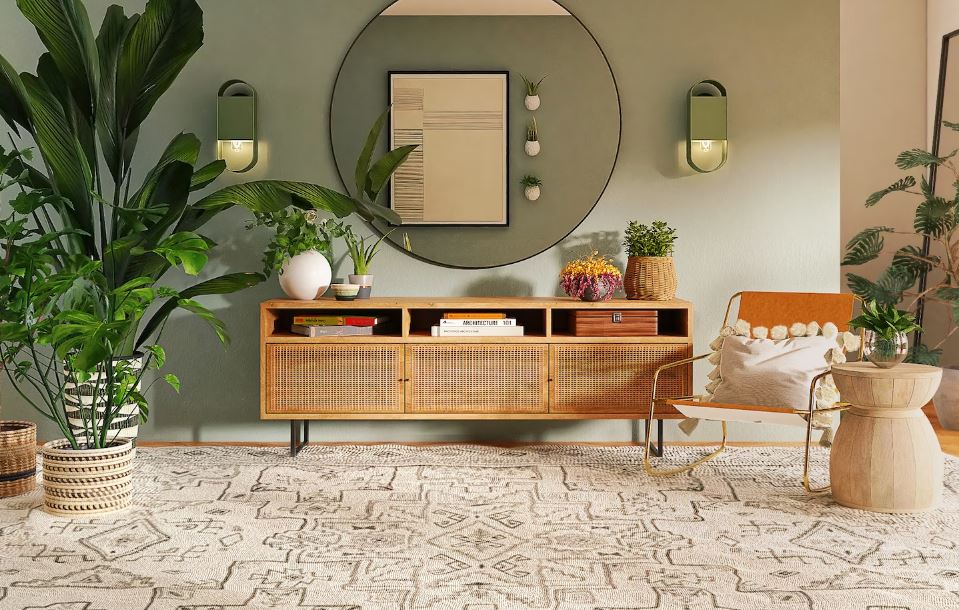So you’ve decided to redecorate your home, and you want to do it in an eco-friendly way. Great idea – your home should reflect your values. The good news is, sustainable interior design is easier than ever. You don’t have to sacrifice style to go green. In fact, sustainable materials and practices can lead to some gorgeous results.

This guide will walk you through how to makeover your space in a sustainable way. We’ll talk about renewable materials, ways to reduce waste, and design tips to increase energy efficiency. You’ll find recommendations for paints, flooring, furniture, lighting and more. And the best part? Many of these options are budget-friendly too.
By the end of this guide, you’ll have the knowledge and inspiration to create an interior that’s stylish, sustainable and a reflection of who you are. The best interior designers in Jaipur can also help you to create aesthetically pleasing sustainable designs for your home.
Let’s get started then.
Sustainable Design Materials: Natural and Eco-Friendly Options
When it comes to sustainable interior design, choosing eco-friendly materials is key. Some of the best options include:
- Natural wood like bamboo, cork, etc. These renewable materials are durable and biodegradable. Cork is great for flooring and wall tiles.
- Natural stones such as granite, slate and limestone. These stones last forever and add texture. Just be sure to seal them properly.
- Recycled metals like copper or aluminium. Metals can be melted down and re-shaped endlessly without losing integrity. Copper is a beautiful accent for countertops, backsplashes or lighting fixtures.
- Organic fabrics like cotton, linen and wool. Natural fibres are breathable, renewable and biodegradable.
- Low or no-VOC paints and stains. VOCs are toxic chemicals found in many paints and stains. Choose eco-friendly options with little or no VOCs.
- Sustainable insulation like cellulose, cotton or hemp. These natural materials improve energy efficiency and indoor air quality.
By choosing sustainable and eco-friendly materials, you can create an interior space that’s healthy, renewable and environmentally responsible. And when it’s time to redecorate, many of these materials can be reused or recycled.
See also: 9 Must-Have Home Improvement Essentials For A Beautiful House
Energy Efficient Lighting and Cooling
To make your home sustainable, start with how you light and cool the place. Using energy-efficient options can significantly lower your utility bills and environmental impact.
For lighting, switch to LED bulbs. They last up to 25 times longer than incandescents and are much more efficient. Look for the Energy Star rating to find the best ones.
- Use task lighting where you need it instead of brightly lighting the whole room.
- Take advantage of natural light by opening blinds and curtains during the day.
When it comes to cooling, raise the thermostat a few degrees. The less extreme the temperature difference between indoors and out, the less energy is required.
- Consider using fans to keep air circulating, especially in rooms you use the most. Ceiling fans and portable fans are great eco-friendly options.
- Make sure your AC unit is properly sized for your space. An oversized system will cycle on and off frequently, reducing efficiency.
- Clean or replace AC filters once a month to allow for proper airflow.
There are many small changes you can make to decrease the energy used in your home. Focus on lighting and cooling, and you’ll be well on your way to sustainable interior design.
Stylish and Sustainable Furniture
When designing an eco-friendly interior, choosing sustainable furniture is key. Look for pieces made from recycled and natural materials that are built to last.
Wood Furniture
Opt for solid wood furniture. Reclaimed wood is also a great choice, as it reuses materials that would otherwise end up in landfills. Some stylish and sustainable wood options include:
- Teak: Durable and resistant to damage. Teak is sustainably harvested in plantations.
- Bamboo: A highly renewable grass that can be harvested annually. Bamboo furniture is stylish and long-lasting.
- Reclaimed wood: Wood salvaged from old barns, factories, and warehouses is a sustainable choice with lots of character. Popular types include reclaimed pine, oak, and redwood.
Upholstered Furniture
When buying upholstered furniture like couches, chairs and ottomans, choose pieces with sustainable fillings and fabrics:
- Cotton, linen and hemp: Natural, renewable fabrics that are biodegradable.
- Wool: A natural fibre from renewable sheep’s wool. Wool is durable, long-lasting and resists stains.
- Soy-based foam: Made from renewable soybean oil. More sustainable than petroleum-based foams.
- Down fill: Feathers and down from ducks and geese. A natural, renewable filling that’s long-lasting. Ensure it comes from ethical sources.
By choosing eco-friendly materials and well-made pieces built to stand the test of time, you can have a stylish space that aligns with your sustainable values.
I hope this article was helpful and insightful and you have gained a good picture of what is sustainable interior design.

She writes quality copywriting, blog, and web content, as well as editing for her clients. She experiences working with WordPress, Squarespace, Shopify, MailChimp, Active Campaign, Yoast, Asana, and Trello.


